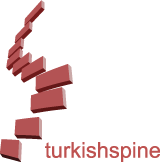ABSTRACT
Lumbar disc hernia usually responds to conservative treatment, but occasionally minimally invasive procedures or surgical interventions are necessary. Currently, the most commonly preferred surgical treatment for persistent sciatic pain caused by lumbar disc herniation is microdiscectomy. Minimally invasive procedures, including percutaneous therapies under local anesthesia, are being increasingly applied in recent years. Percutaneous laser disc decompression (PLDD) is an interventional procedure replacing surgery for some cases of disc protrusion. This treatment can be carried out in an outpatient setting and quick recovery is expected. Epiduroscopy is a minimally invasive diagnostic and therapeutic technique used for patients with chronic lower back pain with or without radiculopathy. It has been thought that epiduroscopy offers an ideal combination of diagnostic and therapeutic interventions in a single session. In this study, we aim to evaluate these two techniques, which are being increasingly applied, and review the recent literature.



